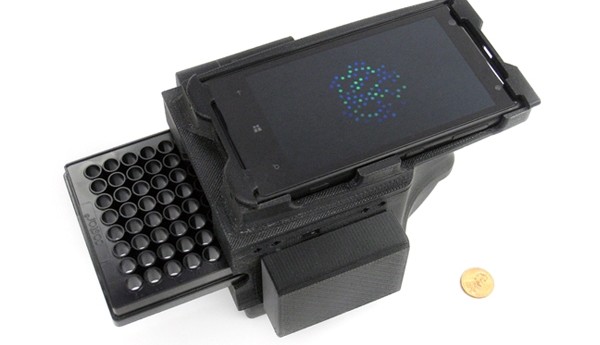Affordable DNA detection – using a smartphone
on

In medial diagnostics there is an increase in the use of DNA biomarkers to detect certain infectious diseases, genetic abnormalities, certain types of cancer or prenatal abnormalities. This uses specific fluorescent dyes (so-called intercalation dyes) which react with the corresponding DNA molecules (nucleic acid).
The problem with this, is that in the first place the test sample generally contains only a minimal amount of the nucleic acid related to the disease so that this has to be increased first; also the dyes used are not particularly stable. For these reasons special equipment is required, which not only occupies a lot of space but is also very expensive (in the order of tens of thousands of euros). So these test can really only be carried out in especially equipped laboratories.
Researchers at the University of California have now developed a method to allow this test to be performed outside of the laboratory at a fraction of the cost. The key component is an additive that not only stabilizes the intercalation dyes, but also increases the fluorescence by more than 10 times. With this, the fluorescence signal is now so much greater than the background noise that it can be detected with the camera sensor of an ordinary smartphone. With a cheap bundle of optical fiber the light from each sample in a lab test plate is directed to a specific location on the camera sensor.
The the quality of the results from this new method is comparable to those from laboratory equipment.



Discussion (0 comments)